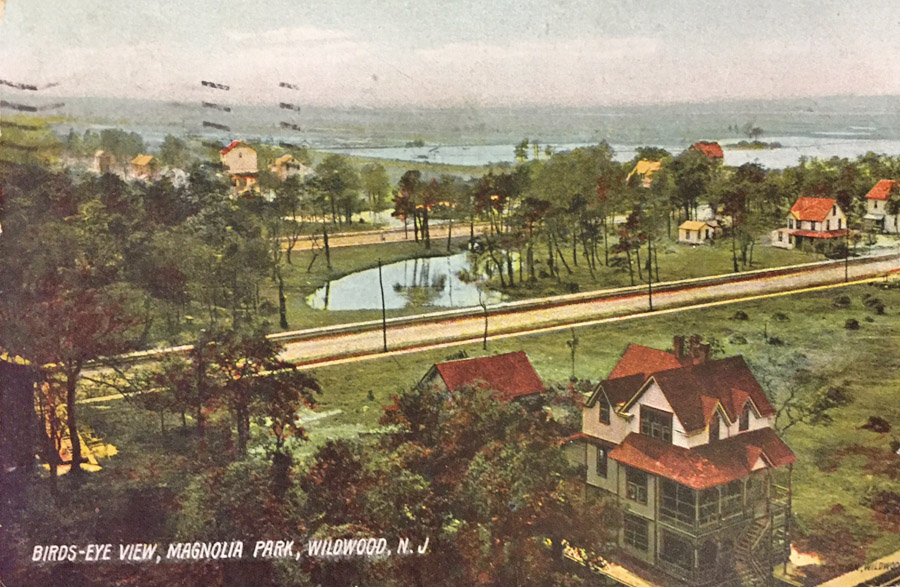
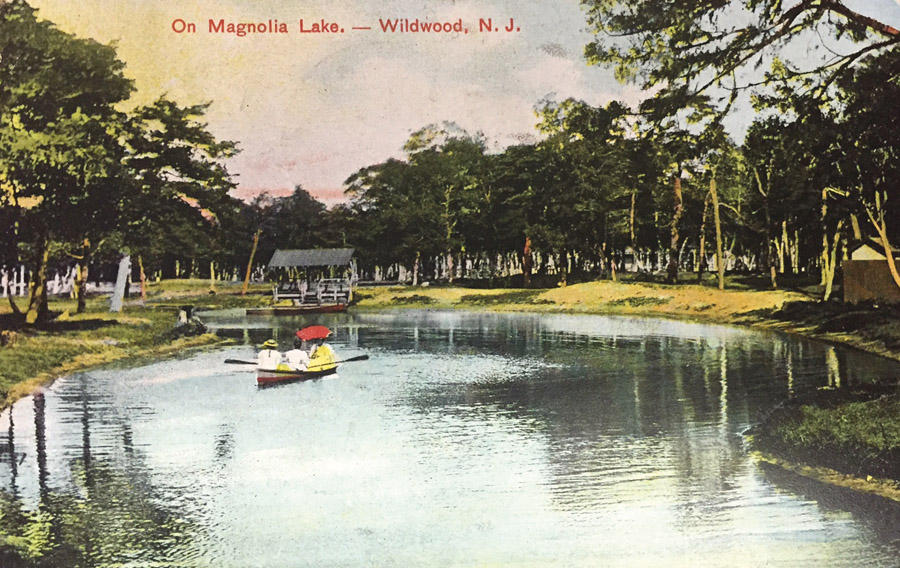
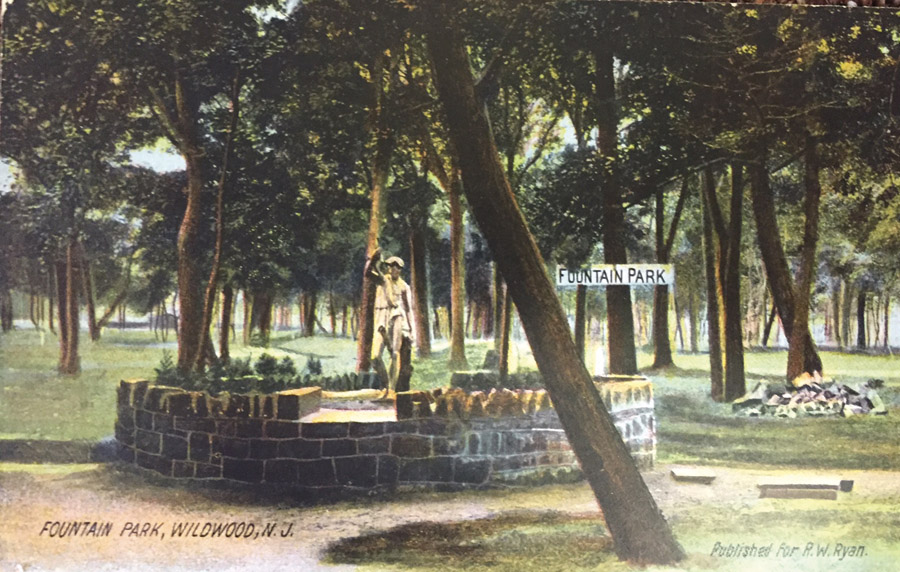
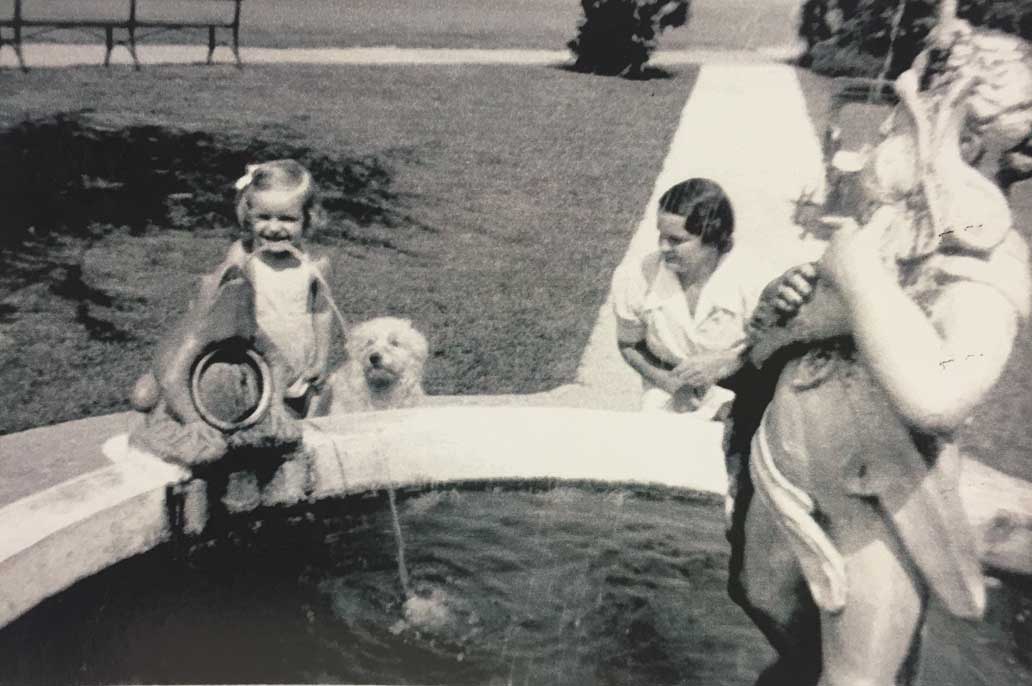
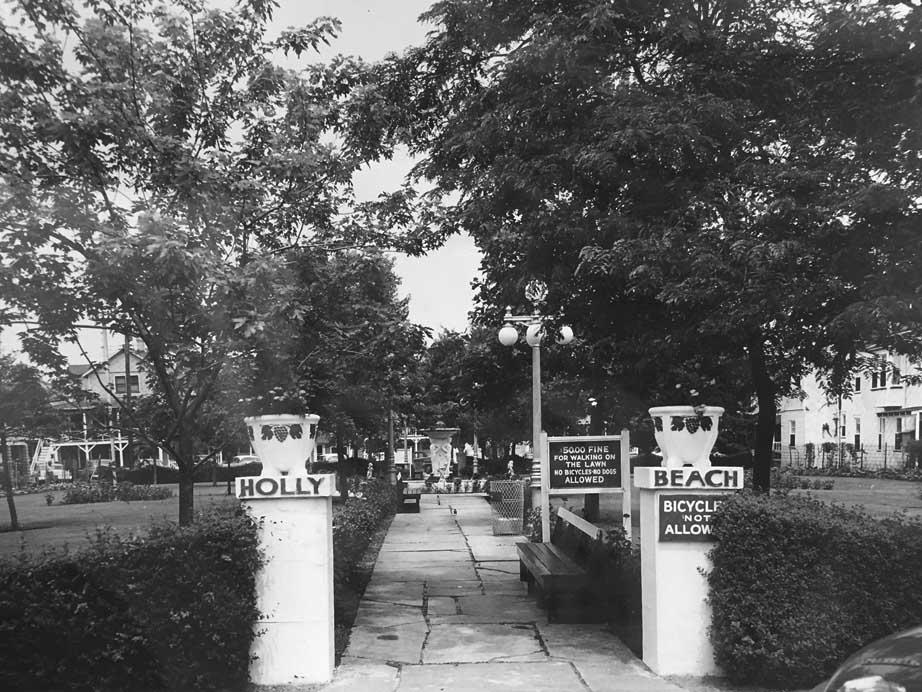
by Cathy Tchorni
Would you be surprised to know that Wildwood used to have a fresh water pond? It did! Read on…
Originally Wildwood was a spit of densely covered oak, holly trees and thick vines. It was nearly untouched until about 1880. Developers Aaron Andrews, Joseph Taylor and John Burk recognized the appeal and the health benefits of the beautiful island, creating the Wildwood Beach Improvement Company. Later Latimer and Philip Baker joined the company.
In 1883 the West Jersey Railroad was created to run trains from Cape May Court House to Anglesea on a precarious bridge over the marshlands. It often washed out and routinely stranded passengers at high tide. Nicknamed the “Mud Hen”, the train chugged to the Olde New Jersey Ave. train station at the top of North Wildwood, then down, what is now New Jersey Ave., with major stops at 17th Ave. in North Wildwood and Holly Beach Train Depot on New Jersey (then Holly Beach Ave.) and Andrews Ave. in Wildwood. Despite the primitive rail bed, tourists poured into Wildwood and the developers built houses and rooming houses to accommodate them.
The developers enhanced the surrounding land of a natural, mostly fresh water pond in 1893. Named Magnolia Lake, it was located in Wildwood on the west side of Holly Beach Ave. in the vicinity of Wildwood and Oak Ave. Many postcards from the era show the beautiful pond with paddle boats, people picnicking on the grass nearby, and the thick trees providing shade. As the town’s homes sprang up on the newly created cross streets, the park became even more of an oasis. In 1903 the first bridge linking the mainland and Wildwood opened to automobile traffic. Additional rail lines were laid from the mainland through the marsh to West Wildwood.
Beautiful Magnolia Lake only lasted about ten years. In 1904 the Baker brothers suggested that part of the lake was polluted, stating in an article of an unidentified newspaper in September that the “deep natural depressions…are filled with stagnant water, using them to become deleterious to the public health…” The brothers proposed that part of the lake be filled in, and the ground then seeded with grass. Since Latimer and Philip were to absorb the cost of the work, they believed they could recoup their cost by building on the resulting lots. All of Magnolia Lake and the surrounding park gradually succumbed to development.
Another early plot of land, Fountain Park, was and still is located at Holly Beach Ave. (now New Jersey Ave.) between Glenwood and Magnolia Ave. Postcards show the heavily treed park that provided a cool respite from the hot sun. James Ristine in a book from Arcadia Press (2002), commented “Set among the trees, Fountain Park provides a shady spot to sit and reflect. Small fountain and its statue add to the charm of the location. People standing in the park would hardly know that they are in the center of a bustling seaside resort.”
In the early 1930s, Edward Zelig Fox partnered with Mayors William H. Bright and Doris Bradway to create beautiful parks, saying “God gave us a beautiful beach. What we ought to do is make the city in back of the beach just as beautiful.” E. Z. ensured that Fountain Park remained a glorious spot to sit in the shade and enjoy cool breezes.
To create additional parks, E. Z. worked with the “Overseer of the Poor” in Wildwood to acquire repossessed land with its buildings, their owners’ victims of the Great Depression. The Overseer hired E. Z. impoverished residents of Wildwood to tear down buildings, clear underbrush, plant grass, lay sidewalk, build fountains, and plant beautiful shrubs and flowers that were raised in greenhouses on the northern side of the island, close to the bay.
An example of his determination, E.Z Fox wanted to acquire the land beneath the closed, large Holly Beach School, located at Burk Ave., between New Jersey and Pacific Aves. The process took approximately five years, but in April 1939, the Holly Beach Park opened. It was dedicated to the last principal of the school, Henry Chalmers and displayed the bell from the school and an original maypole that remained in place from its days in the school yard.
Another major, popular park was and is Columbus Park, located at Burk and Ocean Ave. It was dedicated in 1939 also, as a tribute to Christopher Columbus. The Vietnam Wall was completed in 2010 next to the park. It is a testament to men and women who lost their lives in the Vietnam War. It is also an example of a grass roots’ enthusiastic idea of Greg Mazzotta and Vince Prizzio, who pushed to raise monies to get the Wall built.
Next to Columbus Park, Fox Park was constructed in 1936 between Burk and Montgomery Aves. on Atlantic Ave. Like construction projects everywhere, mistakes caused delays and embarrassment as inferior gravel refused to compact under the weight of rollers for tennis courts. Although the park opened with great ceremony on Flag Day in 1936, the tennis courts were still a mess. It took a private contractor to work with the Wildwood park crew to remove the old gravel and replace it with the proper grade – charging the City $950. – a small fortune during the Depression. Fox Park was reportedly used by Glenn Miller and his band to play softball when they weren’t making beautiful music.
Fox Park expanded in 1947, when E.Z. Fox was Recreation and Parks Director, between the Boardwalk and Ocean Ave., and Taylor and Andrews. Shuffleboard had become popular and six courts were installed. More courts completed the total of courts to 24. The courts were beautiful with flowers planted between the courts. They became a major tourist attraction especially in the 1950s and 1960s, when shuffleboard popularity peaked. in addition to everything else Wildwood offered – they were free! To read more about shuffleboard google “nostalgia shuffleboard”, www.sunbythesea.com
As E.Z. Fox mentioned, visitors and residents deserve beauty away from the ocean. The parks are dotted all over inland Wildwood. Why not try a walking tour on a warm, sunny day and discover the beauty of a cool ocean breeze under the shade of an old oak tree? Three examples of beautifully maintained parks are Memorial Park, honoring World War I veterans, next to the Lions Center at Oak and New Jersey Aves. Another is Fountain Park with its still-beautiful statue at Magnolia and New Jersey Aves. The third is Holly Beach Park, with its maypole still standing from the time the plot was a schoolyard, accessible from Burk and Andrews Aves. between Pacific and New Jersey Aves.
For a map of Wildwood that shows park locations in green, see 24TimeZones.com, online map of Wildwood by Google Maps. The maps aren’t named except for Fox Park, but the map works for a walking tour.
~Research and photos from the Wildwood Historical Museum
